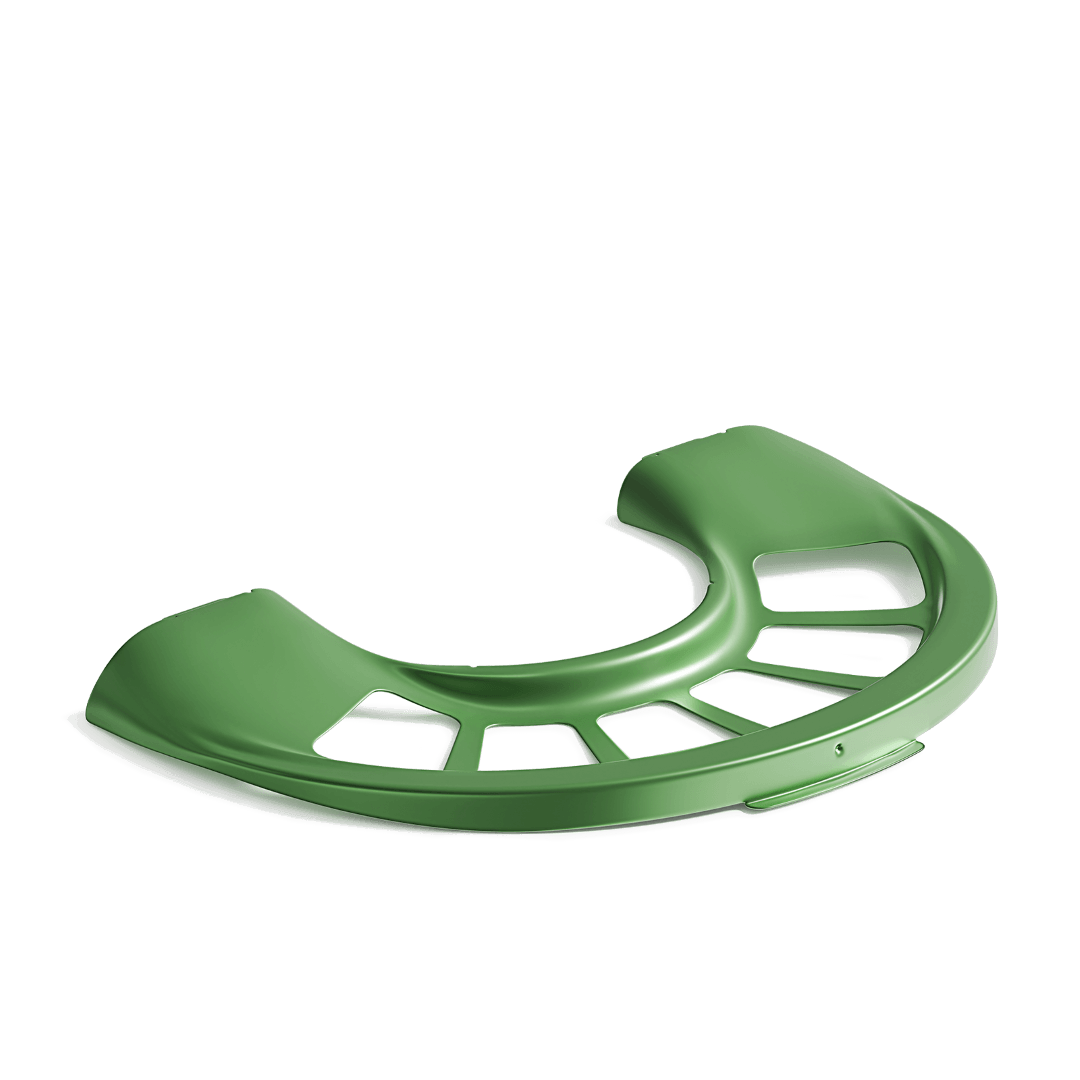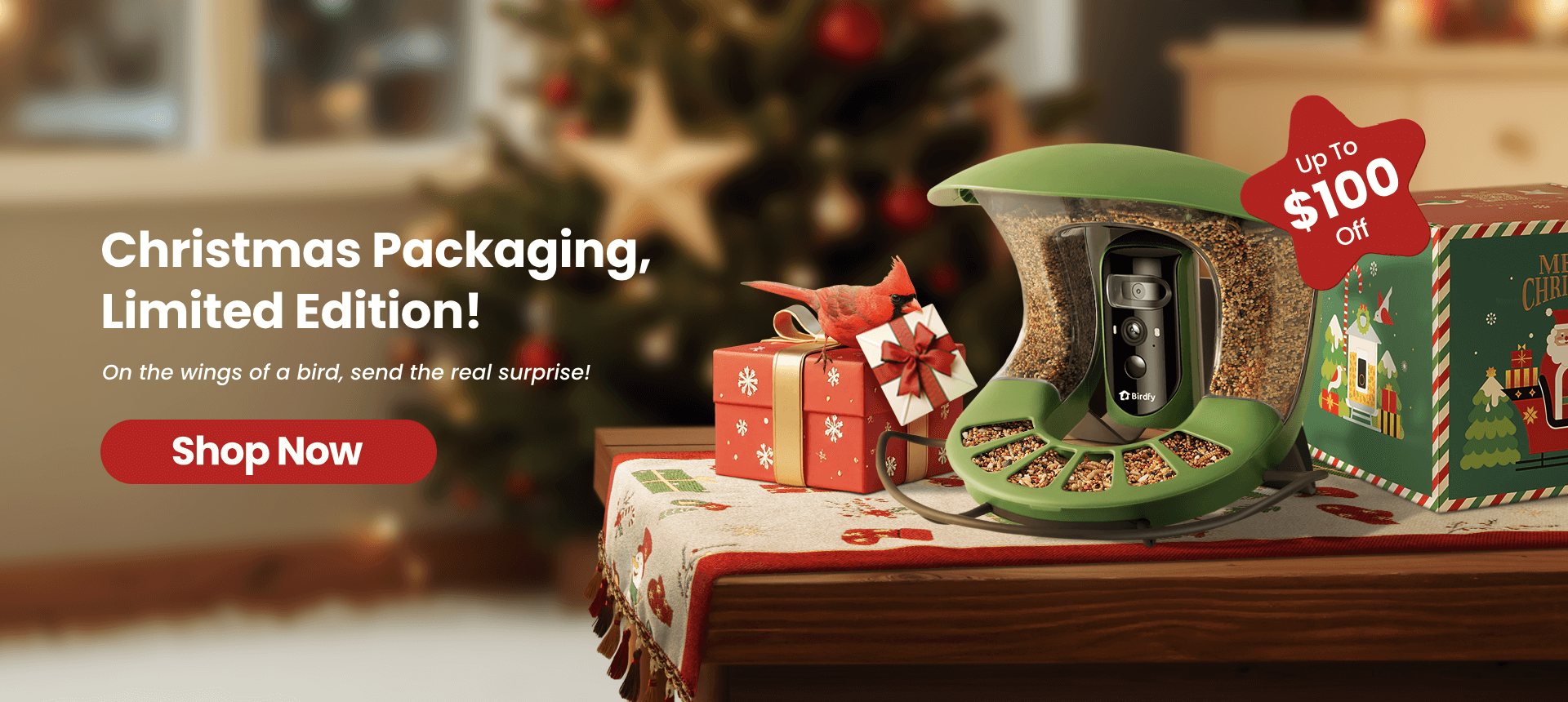Bird Feeder Buying Guide: Everything You Need To Know
Bird feeders help anyone who desires to bring nature close to one's home. With bird feeders, you can feed all kinds of bird species, giving you a unique experience to view and marvel at their beauty. However, selecting the right bird feeder is no easy task. With many choices regarding type, design, and features, making the right decision cannot be very clear.
Whether attracting the small songbirds or the vibrant cardinals, the right feeder makes all the difference. This guide will break down different types of bird feeders, explain how to choose the one that fits your needs and examine the best shapes and colors for bird feeders. You'll need these types to help make an informed decision and bring the perfect feeder into your yard. So, let’s begin to explore!
8 Main Types Of Bird Feeders
There are several different types of bird feeders, all of which are suited to attracting specific birds or holding various kinds of feed. Here are 8 of the main types:
Hopper Feeder
Hopper feeders are the most popular bird feeder styles, providing adequate seed to fill a box structure. Most have a slanted roof to keep the seed dry from rain and other severe weather conditions. Birds can sit on the side and feed from openings on the sides, dispensing the seed as it is eaten. The large capacity of hopper feeders means refills are less frequent, and it is also the best when you happen to be blessed with an active lawn of feathered friends. It also attracts various birds because of its size and design; large species, such as cardinals and bluejays, are more attracted to this feeder. However, their large size makes easy cleaning impossible and tends to attract squirrels mostly, hence stealing food.
- Description: Large, box-like feeders that can hold substantial amounts of seed.
- Best for: Attracting larger birds like cardinals, and blue jays.
- Pros: Holds a lot of food, durable.
- Cons: Harder to clean, may attract squirrels.
-
Price range: $25-$75

Tube Feeder
Tube feeders are long tube feeders suitable for smaller birds. These feeders have multiple feeding ports, making them perfect for small birds. They will keep the seed relatively dry in design. However, damp weather may sometimes cause clogging. They are easy to clean and refill, thus making them low-maintenance for bird lovers. They are often favored for attracting small, colorful songbirds that love seeds, such as Nyjer or sunflower chips.
- Description: Cylinder feeders with multiple feeding ports are available for smaller birds.
- Best for Finches, sparrows, and other small songbirds
- Pros: Easy to fill and clean; multiple feeding spots
- Cons: Can clog if filled with damp seeds.
-
Price range: $10–$50

Platform Feeder
Platform feeders are flat and tray-like, presenting an open space for birds to perch and dine. Therefore, they are versatile and welcoming to an incredible range of perching and ground-feeding species. Platform feeders are very popular among sparrows, doves, and juncos because the open areas of the feeder allow them to hop on and off to feed. These feeders also attract pest species like squirrels and larger birds that will hog the food.

- Description: Flat, open trays allowing birds to roost and feed.
- Best for: Ground-feeding birds like doves, juncos, and sparrows.
- Pros: Accessible to many bird species.
- Cons: Food is out in the open, which may spoil quickly.
-
Price range: $20–$60
Suet Feeder
Suet feeders can hold suet cakes, high-energy food pieces often made of animal fats and seeded or covered with nuts. The element of suet is particularly crucial for birds when sometimes a little extra energy is just what they need to keep themselves warm during the colder months. These feeders are constructed from wire cages to securely hold the suet because birds peck away at it, such as chickadees or woodpeckers. On the other hand, Suet feeders are good at attracting specialty birds that only sometimes come to seed feeders. However, the suet will melt in hot weather and be a mess. The feeder can be hung in a shady spot to avoid this problem.

- Description: Wire cages of high-energy suet cakes.
- Best for: Woodpeckers, chickadees, nuthatches.
- Pros: Good for colder climates and attracts specialty birds.
- Cons: Melts in hot weather.
- Price range: $5-$20
Nyjer Feeder
Nyjer feeders have been built specifically to distribute the tiny Nyjer seeds, which finches, along with other small birds, as food. Usually, such feeders have fewer feeding ports meant to minimize seeds' wastage and allow the smaller birds to feed. Extremely slender in design, Nyjer feeders could be best suited to attract goldfinches, pine siskins, and other species of the same size that like taking tiny seeds. The only drawback is that Nyjer seeds can be pricey compared to different kinds of bird food. Also, these feeders might not attract as many species of birds, but they are fabulous for attracting finches.
- Description: Feeders are specifically designed to dispense the Nyjer seeds to smaller birds.
- Best for: Goldfinches and pine siskins.
- Pros: Perfect for small birds; minimizes waste since seeds do not spill.
- Cons: Nyjer seeds can be pricey.
- Price range: $15–$40
Window Feeder
Window feeder attaches directly to your window using suction cups to give you a close-up view of birds as they come in to feed. It is perfect for those bird lovers who want the best close-up view of their feathered visitors without disturbing them. They are usually transparent in plastic. They are filled with seeds and provide a thrilling experience for bird watching. But they can fall off since they attach with suction cups. Window feeders are harder to clean than other types, but the close-up view makes them a favorite for many.

- Description: Small feeders attach to windows using suction cups.
- Best for: Sparrows, finches, and chickadees.
- Pros: You have an intimate view of the birds.
- Cons: The suction cups may fail and are harder to clean.
- Price range: $10–$30
Ground Feeder
Ground feeders are the best platforms for placing on the ground to accommodate the preferences of birds that tend to forage on the ground. Such feeders are the best for species like mourning doves, juncos, or quails, as they will surely forage for their food on the ground. Ground feeders are extremely easy to use and facilitate a more extensive variety of birds to be attracted. However, they attract rodents and insects, and the seed is more exposed to moisture and spoilage. They must be kept in a safe, open space from potential predators like cats.

- Description: Simple feeders placed on the ground, attracting ground-feeding birds.
- Best for: For mourning doves, juncos, and quails.
- Pros: Easy use and attracts ground feeders.
- Cons: More susceptible to pests and spoilage.
- Price range: $10–$40
Peanut Feeder
These peanut feeders hold whole peanuts, one of the most readily available treats among large birds such as bluejays and woodpeckers. The ones made from wire meshing so that the birds can peck at peanuts while keeping them on the sides, these peanut feeders are the treats in terms of nutritional value for the birds. Peanuts are a high-protein feed source, thus proving a good option in feeding the birds. However, squirrels frequently attend peanut feeders because they enjoy peanuts like birds. One can minimize this issue by placing a feeder far from trees and fences or simply choosing a squirrel-proof design.

- Description: Those wire mesh feeders are designed to hold whole peanuts.
- Best for: Blue jays, woodpeckers, and nuthatches.
- Pros: This feeder is rich in protein, so many birds visit it.
- Cons: It mainly attracts squirrels.
- Price range: $15–$35
How Do You Choose A Right Bird Feeder?
The kind of bird feeder depends on several things. Some of these factors are the species of birds you would like to attract, the local climate, and where to place the feeder. The feeder is a choice if, at any given time, you have little time for its cleaning and refilling.
What To Consider When Buying A Bird Feeder?
Several things must be considered when purchasing a bird feeder. It helps the birds access the food easily and makes maintenance easier when a well-chosen feeder is taken. You will realize that different species have unique feeding habits, and knowing the kinds of feeders appropriate for attracting birds to your backyard is vital. Other details include feeder capacity, material, and resistance to pests like squirrels. All these shall determine your bird feeder's workability and lifespan. Here is a closer look at some things to consider when purchasing.
Feeder Capacity
Feeder capacity refers to how much food the feeder can hold. A large yard is ideal if you have a busy yard filled with birds, so you do not have to refill it too frequently. Larger feeders might be messy to clean, and stale or spoiled food can become a health hazard for your bird visitors.
A small feeder may require daily refilling, but it might be easy to maintain and clean. Consider how much time you will spend on feeder maintenance when deciding on capacity.
Material
The bird feeders can be wood, metal, or plastic. Metal or weather-resistant plastic will be more durable and thus likely to last much longer, resisting harsh conditions such as heavy rain or strong winds.
Wooden feeders may seem a little more natural but are more likely to require extra care so that they are not rotten or worn over time. As you choose your feeder, consider materials that withstand weathering and can be cleaned easily and less hassle-free. Premium material ensures your feeder will last through many seasons.
Pests ProtectionBirds' food can be easily plundered by squirrels, raccoons, and other pests, so it is a great reason to acquire a feeder based on pest protection grounds. Some feeders have squirrel-proof designs, and placing them away from trees and fences helps prevent squirrels from accessing the seed.
What Is The Best Shape For A Bird Feeder?
The shape of a bird feeder can influence both its function and appearance. Tube feeders are ideal for small birds, whereas platform feeders can accommodate a cross-section of species. Hopper feeders have a box-like shape that makes them suitable for holding quantities of food and attracting large birds.
Birds like feeder designs that easily allow access to food, which is why overly intricate designs should be avoided. A suitable shape should be both accommodating when birds perch there to eat and not too tight that the birds nest each other close too tightly. Overall, a feeder's shape should provide a symbiosis of practical use and the efficiency of attracting birds.
What Is The Best Color For A Bird Feeder?
Birds are attracted to bright, natural color imitations of their surroundings. Reds, yellows, and blues attract some, while others are especially hummer to red. If you can choose a color that will attract attention to your feeder from those birds you want to see, then so be it.
However, brighter colors may attract the wrong type of attention, either in the form of predators or pests. So, it depends on how you set the balance to ensure maximum visibility without sacrificing the birds' safety and aesthetics in your garden.
Conclusion
To buy the perfect bird feeder, you need to understand both the birds' needs and the feeder's features. Hopper and tube feeders are here for different purposes and welcome certain species. Then, you have suet and mesh feeders for some diversity. Based on parameters such as bird species, feeder material, capacity, and color, you will be able to come up with the best idea of what to have in your garden and let's say if you are a beginner or an experienced bird watcher, the best bird feeder will bring life and excitement to your backyard.





























